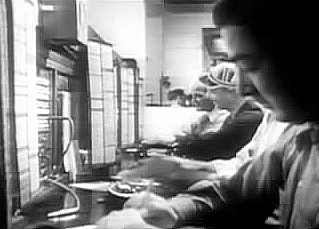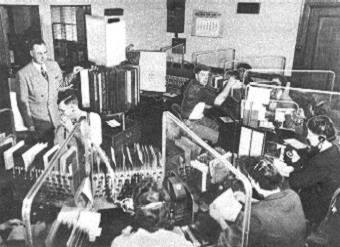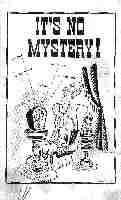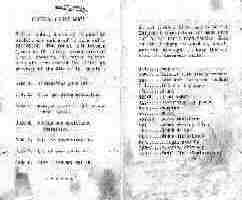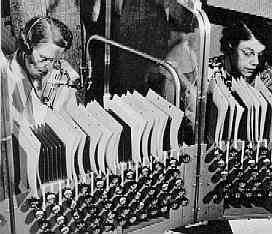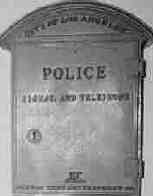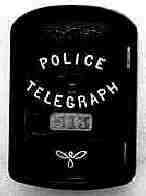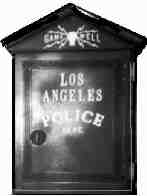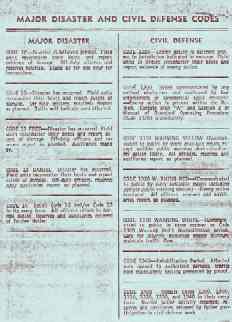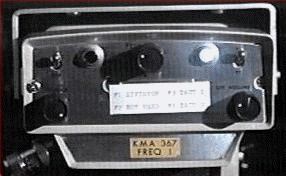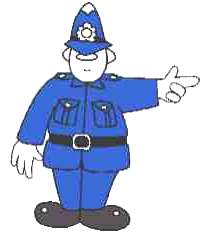In 1946, as the FCC was allocating new radio
bands for police agencies, Los Angeles was the
site of a test/demonstration of the comparative
quaities of the 30-40mc, 72-76 and 152-162mc
bands for mobile transmitting. The latter group,
today known as the "VHF High band,"
showed great promise in built-up areas. Click here
to see an interesting report of the 1946 tests of
the different radio bands, and AM vs FM,
conducted by L.A.P.D. for the California APCO
chapters.
|
In 1948, LAPD's mobile "talk-in"
channels were shifted up to this "VHF"
band, in the 154-155
mc segment, at which
time the venerable KMA367 callsign was first
assigned. Several of those original VHF
frequencies are still in use more than half a
century later, most notably Frequency 9 - 154.83 mHz - which is today's
"Tac 1 - Hotshot" channel. At the same time the
department began converting the mobile
frequencies from AM to FM modulation, which
reduced electrical interference and improved
reception.
|
However, rapid
growth, tight budgets, and automakers' changing
car electrical systems from 6-volts to 12-volts
all slowed the process significantly. For a
number of years until the late 1950s, and there
were both FM and AM radios operating in 6- and
12-volt police cars. The radio shop at 5th &
San Pedro Streets had to struggle to maintain
parts (and proficiency) to keep all those radio
models functioning.
|
1949 also saw LAPD's
motorcycle fleet starting to use two-way radios.
Until that time motor officers had been using
receiving-only radios, as there were few
transmitters available which could operate on
their motors and handle the vibration.
|
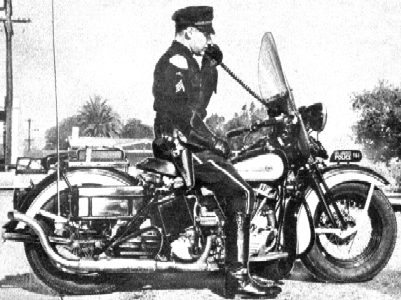 |
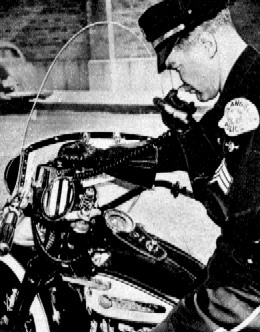 |
A Traffic Enforcement
Division Sergeant - sans
helmet - checks out his
fancy new rig
|
As the city grew in
the early 1950's, and radio traffic increased, a
second dispatch frequency of 2366 kc was added for
dispatching to the Valley, Harbor, and West
LA-Venice, using callsigns of KQJO, KQJP
and KQJN,
respectively. San Fernando Valley dispatching was
by then being handled from a separate facility at
"Valley Services Division" in Van Nuys.
|

RTO at her console
in the new Police Administration Building, 1955.
Click to enlarge |
When the new
"Police Administration Building" (later
renamed "Parker Center") opened in
1955, Communications Division was one of the
first facilities to begin operation.
Interestingly enough, though the space was more
than three times as large as the previous cramped
space in the north wing of City Hall, the general
operation continued much as it had for many
years. It is said that many of the operators'
"status boards" were literally carried
over from City Hall and installed in the
horse-shoe shaped "mike room" consoles.
Calls continued to be taken by policemen at the
complaint board, and were still sent by a fast
conveyor belt into the radio room.
|
In a major
restructuring in 1964 and 1965, the dispatch
"talkout" frequencies were changed to
the 158-159 mHz frequency range,
and RTOs eventually had five frequencies (A, B,
C, D and E) for dispatching to
their respective divisions. Though apparently
unused, the old 1730 kcs
frequency remained licensed to LAPD until a June
26, 1978 modification of the "KMA367"
authorization.
|
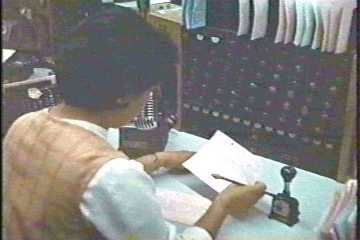
RTO and status-board at
Parker Center, circa 1968
|
The
Gamewell
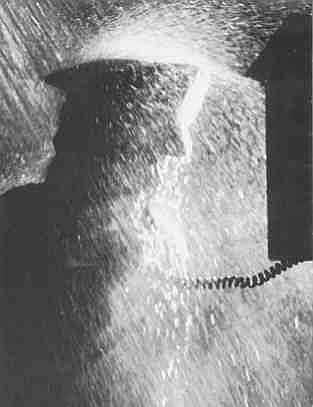
Rain
or shine
|
| The
"Gamewell" call-box
system has been in use in Los
Angeles for more than a century.
Beginning in the 1890s, the boxes
were utilized for hourly call-ins
by officers in the field, who all
had fixed posts or walked
footbeats. Callboxes were located
in all patrol divisions, usually
installed at intersections where
two or more beats met. When
practical, boxes were located
along Division
boundaries for efficiency and
economy. Early on, the
policeman would open the box and
pull a handle to identify himself
to the city operator downtown. If
there were no calls for him, he
would receive a
"two-bell" signal and
be on his way. Three bells,
however, meant there was a call
for him; he would pick up the
receiver and listen to a message
telling him only to "See the
man (or woman)," and the
location - nothing more.
Such cryptic
information was certainly not
conducive to officer safety! A
young policeman from the early
1910-era later wrote that this
practice added to his misgivings
about his new career. "It
seemed to me the operator should
have learned more, and the
policeman answering the call
should at least have some idea of
what to expect. I had yet to
learn that most police calls were
brief and lacked detail. The
important matter on any call was
the address.1"
( Nearly a
hundred years later plenty of
patrol officers have muttered the
same complaint, though the
operators and the equipment in
use today are immeasurably
better, and the information
available by radio or MDT is
tremendously improved ).
By about 1925,
the system had been redesigned.
There were over 500 callboxes
throughout the city, each
equipped with a Western Electric
telephone handset, and they were
now connected to the local
Division station rather than to
City Hall. At his appointed time
each hour, the officer would pull
a handle to identify his callbox
to the Divisonal operator, and
then give his name. If there were
any calls or messages pending for
him, they would be given,
otherwise he would simply be
"marked off" as having
called in for the hour, and would
receive the two-bell "you
are clear" signal.
In the 1970s, the
remaining private-circuit
"Gamewell" system was
integrated into the city's
"Centrex" telephone
system; the antiquated
street-corner phone-sets were
replaced with push-button phones,
and the two plug-and-cord
Gamewell consoles in
Communications Division were
removed.
|
|
|
NEW! 1950s "Daily
Training Bulletin"
I've been fortunate enough to
obtain a nearly-new copy of the 1953/54 "Daily
Training Bulletin" of the LAPD. In just over half a
century, many things have changed so very much...while
others, not a bit. Click here to see the section on
Radio Communications ... it's quite a "hoot! "
|
